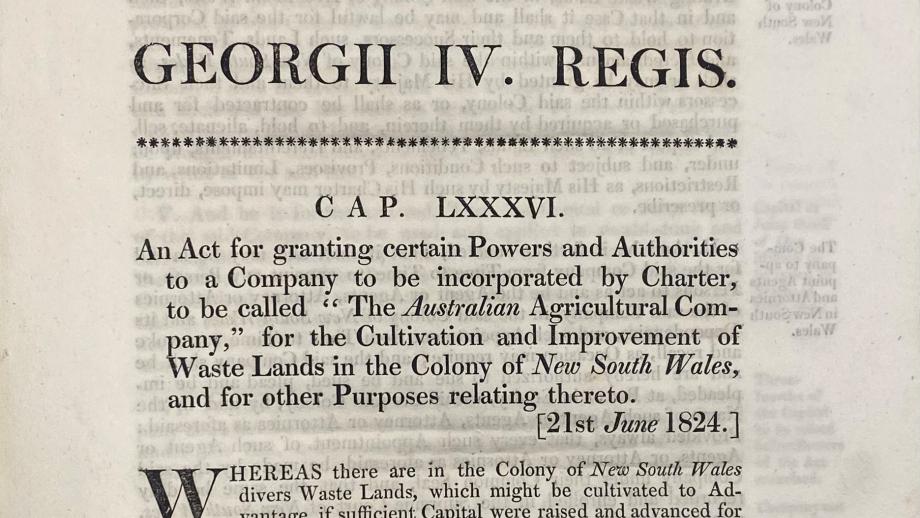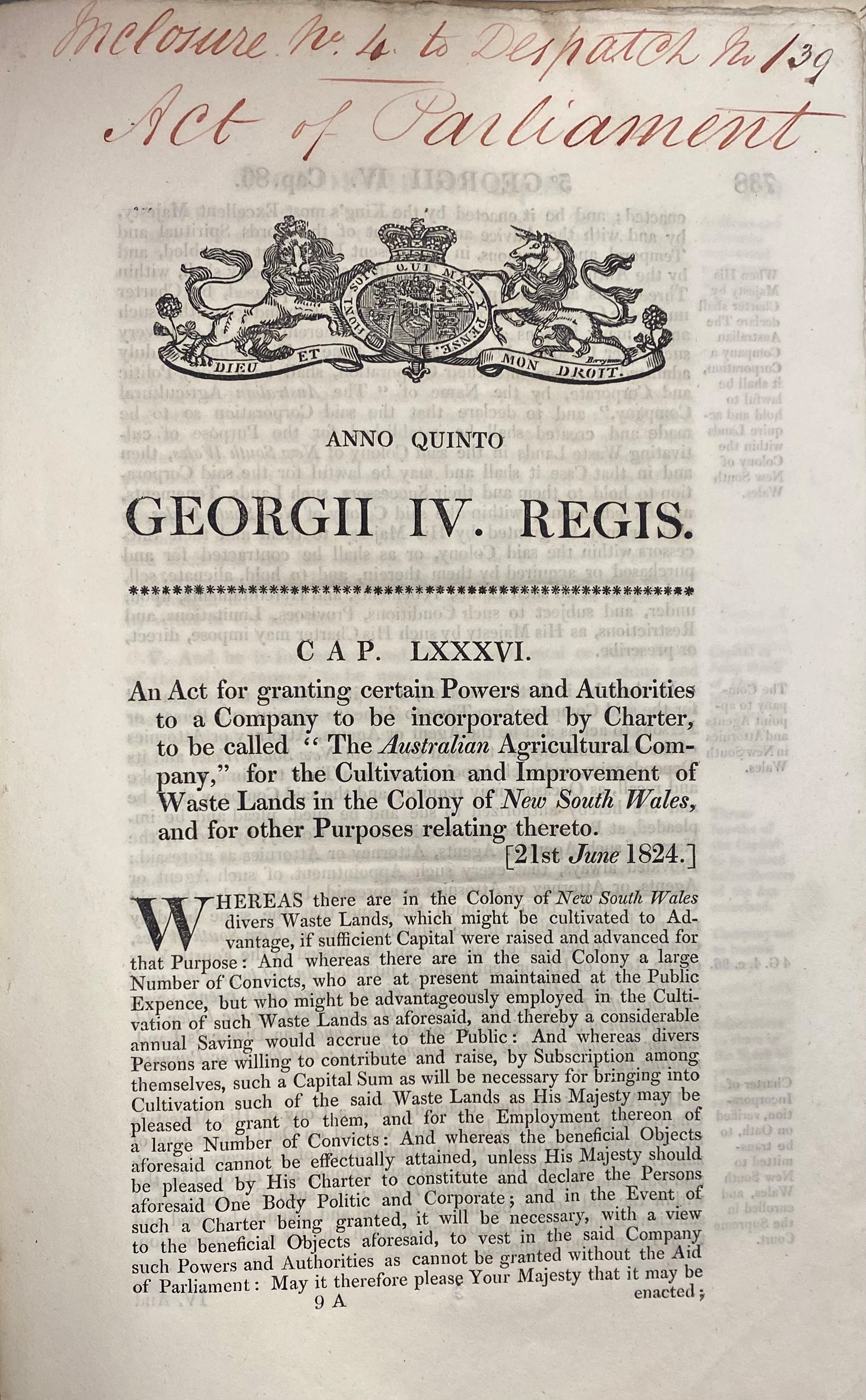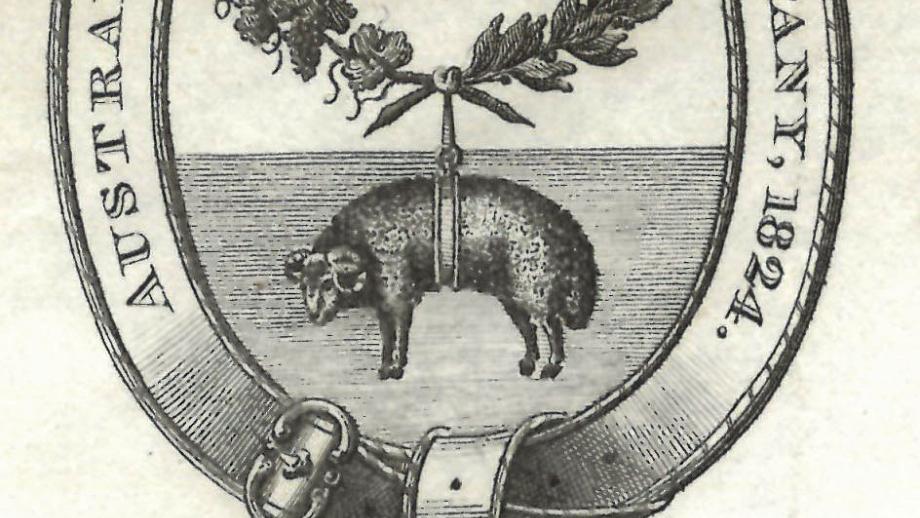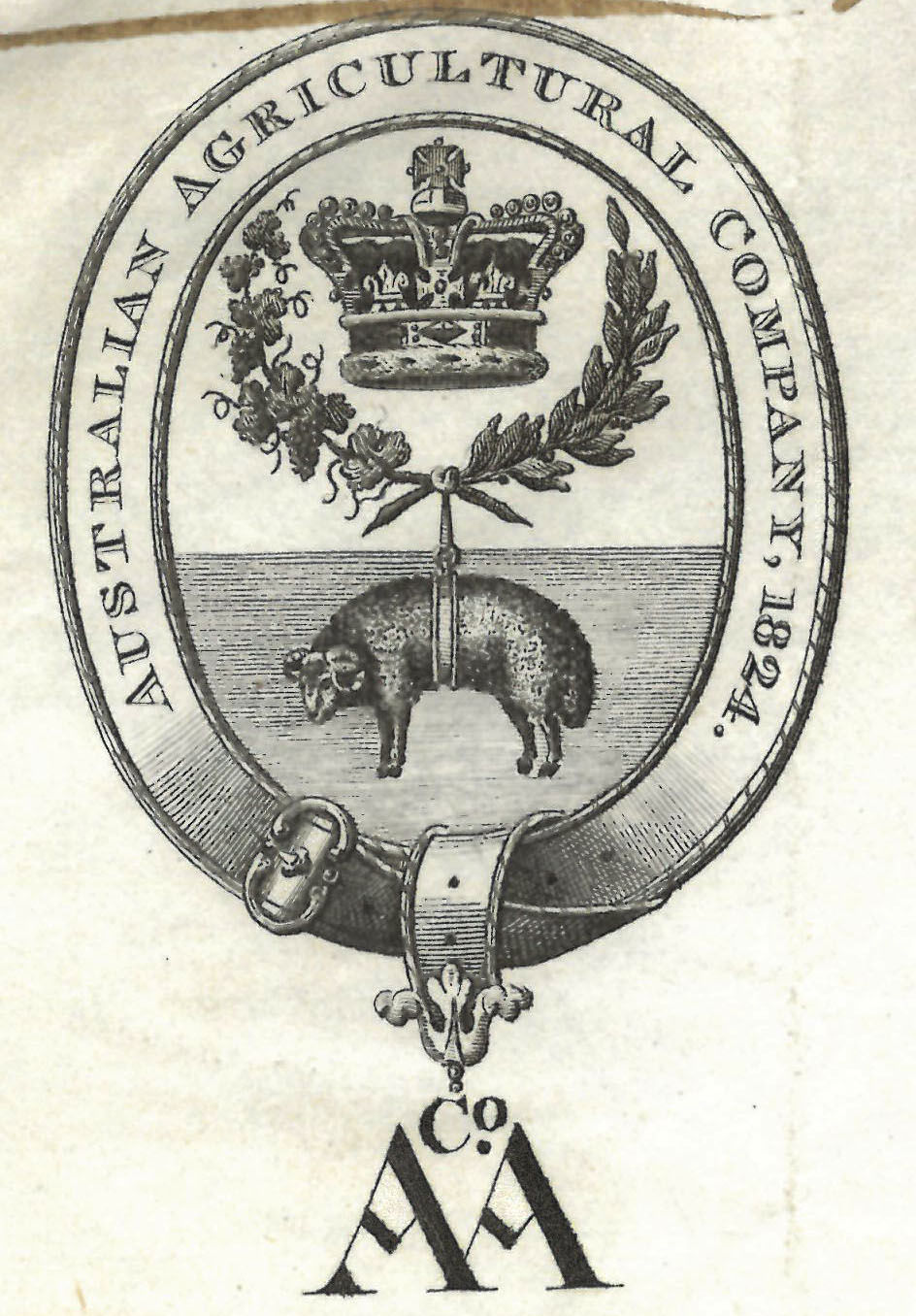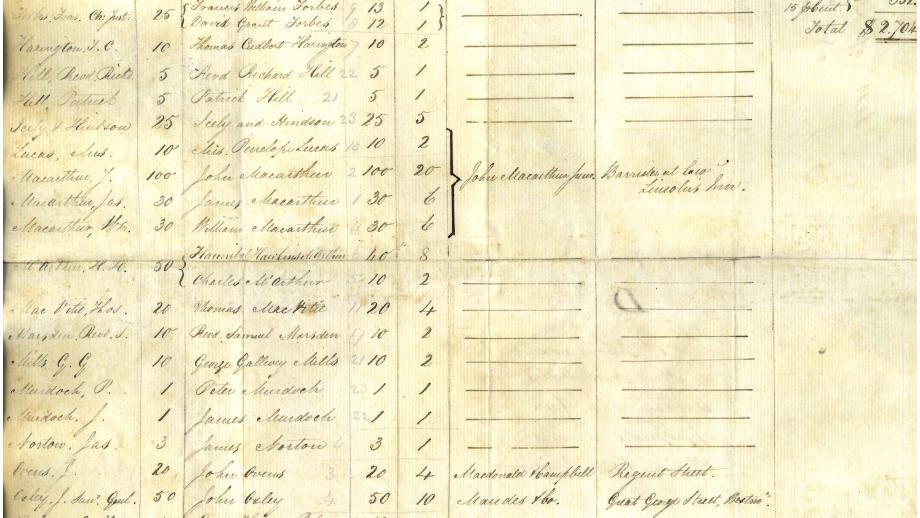Beginnings
In 1817, Commissioner John Bigge was dispatched to the colony of New South Wales to assess its governance. One of Bigge’s reports raised the prospect of the Colony as an area for investment, with the soil and climate congenial to the delicate constitution of the Merino sheep.
On Saturday 10 April 1824, a dozen men met in the chambers of the young Australian-born lawyer, John Macarthur Jnr, at Lincoln’s Inn in London. John Jr was the second son of John Macarthur Sr of Camden, New South Wales. The men attending the meeting, including members of parliament and directors of the Bank of England and East India Company, considered the plan to form an agricultural company in New South Wales to raise sheep and sell their fleece on the London market. Specifically, they proposed the following terms:
- The Company be incorporated by a Letters Patent or an Act of Parliament, and be called ‘The Australian Company,’ with a capital of £1,000,000 sterling divided into 10,000 shares of £100 each.
- A grant of 1 million acres of land be obtained from the Crown.
- An agricultural establishment be formed for the purpose of raising fine wool and subordinate to that object, cultivating the vine, olive, flax, and other productions now imported from the shores of the Mediterranean.
- The affairs of the Company be managed in England by a board of directors, and in the colony by agents of experience and respectability.
- Emigration to the Company’s lands be encouraged, and particularly the emigration of families from Saxony and the South of France acquainted with the management of fine-woolled sheep and the culture of the vine.
- Flocks of sheep be increased and improved with the view to the export of wool, on the plan adopted upon the estates of the Esterhazy and other great families in Germany and Spain, from which their principal revenues were derived.
The Company was part of the English stock market boom of 1823-25, which spawned an astonishing 600 new companies. Only a handful of these companies survived long term, with the Australian Agricultural Company among them.
On 21 June 1824 the Australian Agricultural Company was established by an Act of British Parliament. The Act outlined the Company’s nominal capital; the number, value, and transfer of shares; and the number and qualification (number of shares held) of the directors, employ and discharge agents and servants (employees). The Company was formed as the Australian Company, but as the Company’s bill was passing through the House of Lords, one of their lordships recalled an Act some weeks earlier for an Australian Company (of Leith) – a shipping company intending to take Scottish settlers to Australia. To differentiate between the companies, ‘Agricultural’ was added to the title in the bill, forming the Australian Agricultural Company.
On 1 November 1824 the Australian Agricultural Company was issued a Royal Charter which safeguarded the public interest as well as the interests of the Company. An important element of the charter was to incorporate the Company, thus making it a legal corporate body and enabling it to hold land. The Charter stated that the Company was to pay quit rent at the rate of 30/- per £100 valuation (land valued at 1/6 per acres) for 25 years or pay £250,000 up front. However, this would be waived if the Company took (rationed, clothed and housed) 600 convicts in the first five years, and 1,400 convicts for next 20 years. The Company was never allocated anywhere near this number of convicts to enable it to fulfil this requirement. Additionally, the charter ordered that no land be sold for five years from the day of the grant, as well as the requirement of the Company to develop roads, buildings, fences etc to the sum of £100,000. Although the directors were able to prove they had expended £100,000 on improvements, they were eventually forced to give up their coal monopoly to make up for the lack of convict expenditure. At this point (1847), the Company obtained its formal land grant which enabled it to start selling land.
The original Company crest depicted a hung sheep, which was the traditional symbol for wool, derived from the Spanish Order of the Golden Fleece. The crown indicated the Company was established by Royal Charter.
